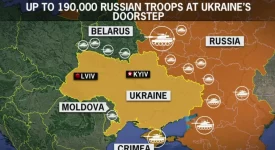Faced with a near-certain defeat in parliament in December, Prime Minister Theresa May postponed the ‘meaningful vote’ on her Brexit deal, though the bigger story is that the UK parliament seized control of the Brexit process from the government on 4 December, when it approved an amendment giving MPs greater power over what happens if Westminster were to reject May’s deal with the EU. But now the worst fears have become a reality – the long-negotiated Brexit deal has just suffered a resounding defeat, plunging the country into a political chaos.
Much of the discontent in the Westminster focuses on the backstop for the Irish border – critics of the arrangement namely argue that it could trap the UK indefinitely and limit its ability to conclude free trade agreements with third countries. But such a desperate move – an attempt to pursuade the EU to renegotiate the deal – could ultimately harm her. The EU will not renegotiate in principle, and certainly not on this issue.
From Brussels’ perspective, the current withdrawal agreement is the best workable deal given the UK’s red lines and the need to respect the integrity of the Single Market. Making further concessions on the backstop would risk undermining it. The most that May can hope for are cosmetic changes to the political declaration on the future relationship or some accompanying declarations. But announcing further talks raises expectations that will inevitably be dashed. May will not return with a significantly better deal than what is already on the table.
With the withdrawal agreement and political declaration now voted down in parliament, the government has 21 days to put forward a motion setting out its next steps, which MPs will have the power to amend. While any parliamentary amendments would not be legally binding, politically the UK government would find it hard to ignore. Meanwhile, what is often missed in the UK debate is that finding a way forward requires support from the EU – which may or may not be forthcoming. Ultimately, the UK faces a three-way choice: remain in the EU, take the deal, or leave with no deal.
With May’s deal rejected by Westminster, the MPs could request the government to shift towards a ‘Norway plus’ model (this option appears unlikely, given that it comes with obligations such as Freedom of Movement, that most Conservative and Labour MPs would find hard to accept), or they could call for a ‘people’s vote’, which the UCL Constitution Unit estimates would take up to 22 weeks to organise, implying an extension to the Article 50 period that requires unanimous approval of the European Council.
While the EU may have little reason to object to a one- or two-month extension, it might be less happy to delay Brexit until after the European elections in May without evidence of a broad shift towards continued EU membership in the UK. However, it would be politically difficult for the European Council to deny London a request to give it enough time to hold a second referendum, as long as ‘remain’ vs ‘May’s deal’ were both on the ballot paper. The largest obstacle to a second referendum is domestic opposition. Taken all this into account, MPs have surely realised how constrained their choices are, and with May’s deal rejected and with no plausible alternatives on the table, the risk of no deal increases, regardless of what parliament does to rule it out.
‚Westminster Has Less Power Over Brexit Than it May Think‘ – Policy Briefing by Larissa Brunner – European Policy Centre / EPC.







